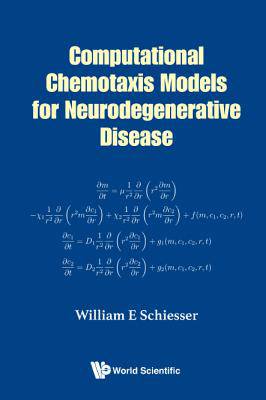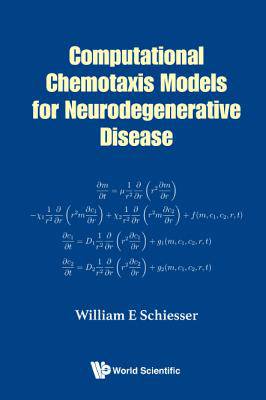
Je cadeautjes zeker op tijd in huis hebben voor de feestdagen? Kom langs in onze winkels en vind het perfecte geschenk!
- Afhalen na 1 uur in een winkel met voorraad
- Gratis thuislevering in België vanaf € 30
- Ruim aanbod met 7 miljoen producten
Je cadeautjes zeker op tijd in huis hebben voor de feestdagen? Kom langs in onze winkels en vind het perfecte geschenk!
- Afhalen na 1 uur in een winkel met voorraad
- Gratis thuislevering in België vanaf € 30
- Ruim aanbod met 7 miljoen producten
Zoeken
Computational Chemotaxis Models for Neurodegenerative Disease
William E Schiesser
Hardcover | Engels
€ 149,95
+ 299 punten
Uitvoering
Omschrijving
The mathematical model presented in this book, based on partial differential equations (PDEs) describing attractant-repellent chemotaxis, is offered for a quantitative analysis of neurodegenerative disease (ND), e.g., Alzheimer's disease (AD). The model is a representation of basic phenomena (mechanisms) for diffusive transport and biochemical kinetics that provides the spatiotemporal distribution of components which could explain the evolution of ND, and is offered with the intended purpose of providing a small step toward the understanding, and possible treatment of ND.The format and emphasis of the presentation is based on the following elements: In other words, a methodology for numerical PDE modeling is presented that is flexible, open ended and readily implemented on modest computers. If the reader is interested in an alternate model, it might possibly be implemented by: (1) modifying and/or extending the current model (for example, by adding terms to the PDEs or adding additional PDEs), or (2) using the reported routines as a prototype for the model of interest.These suggestions illustrate an important feature of computer-based modeling, that is, the readily available procedure of numerically experimenting with a model. The current model is offered as only a first step toward the resolution of this urgent medical problem.
Specificaties
Betrokkenen
- Auteur(s):
- Uitgeverij:
Inhoud
- Aantal bladzijden:
- 172
- Taal:
- Engels
Eigenschappen
- Productcode (EAN):
- 9789813207455
- Verschijningsdatum:
- 19/04/2017
- Uitvoering:
- Hardcover
- Formaat:
- Genaaid
- Afmetingen:
- 160 mm x 234 mm
- Gewicht:
- 453 g

Alleen bij Standaard Boekhandel
+ 299 punten op je klantenkaart van Standaard Boekhandel
Beoordelingen
We publiceren alleen reviews die voldoen aan de voorwaarden voor reviews. Bekijk onze voorwaarden voor reviews.









